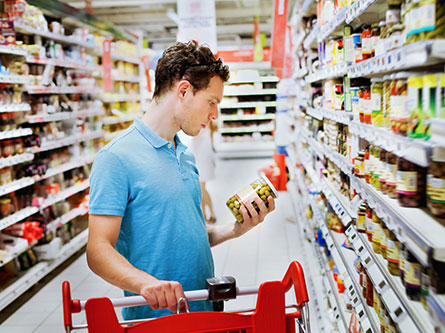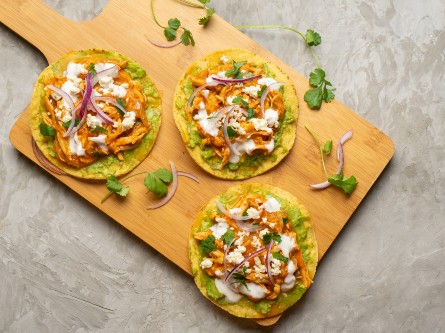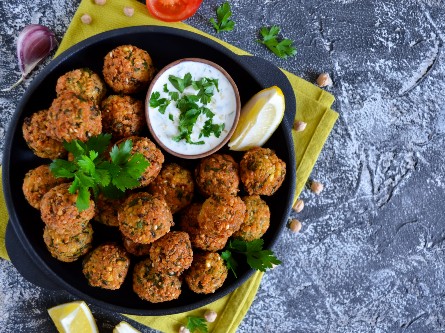To keep a heart-healthy diet and help lower blood pressure, it's important to watch the amount of salt (sodium) in your diet. High blood pressure, or hypertension, may have no visible symptoms. However, it can increase your risk of heart attack and stroke.
Eating foods with a lot of sodium can lead to high blood pressure and other health conditions. Your total amount of sodium per day should be no more than 1,500-2,000 milligrams (mg).
Sodium and salt are often used as synonyms, but they don't mean the same thing. Table salt is a compound found in nature, while sodium is one of the chemical elements in salt.
Learn more about high blood pressure symptoms and risk factors
Many foods have hidden sodium, and the amount of sodium in packaged foods can be quite high. Choosing low-sodium or low-salt products and not adding salt in cooking can help you limit your sodium intake. Here are a few more easy tips to get you started:
High-sodium foods you should avoid
- Seasonings with salt: This includes "lite salt," seasoned salts, and onion and garlic salts. Also, beware of other ingredients often used in cooking. These include baking soda, baking powder, soy sauce, Worcestershire sauce, barbecue sauce, and instant soup mixes.
- Foods with visible salt crystals: Examples of these include salted nuts, potato chips, tortilla chips, salted popcorn, crackers, and pretzels.
- Processed and canned foods: Canned vegetables, canned soup, canned beans, stew, chili, tomato/spaghetti/pizza sauce, and baked and refried beans all have added sodium.
- Frozen and packaged quick meals: This includes boxed mac and cheese, rice and noodle mixes, instant oatmeal, and instant cocoa mix.
- Baked goods or prepared mixes: Foods where you just add water or a couple of ingredients, such as biscuits, cornbread, muffins, pancakes, and cakes are in this category.
- Cured or canned meat: This includes ham, bacon, salt pork, sausage, cold cuts (like bologna and salami), hot dogs, and Spam.
- High-sodium dairy products: Most cheese, cottage cheese, processed cheese spreads, and buttermilk are part of this group.
- Condiments and other toppings: These include olives, pickles, ketchup, prepared mustard, and commercially prepared salad dressings.
Cancel out sodium with potassium to help lower blood pressure
Research shows that potassium helps cancel sodium's effect on blood pressure. It also likely lowers the risk of stroke. Many of us don't get enough potassium in our diets. Eating more fruits and vegetables high in potassium can help.
- Vegetables high in potassium include potatoes, tomatoes, spinach, raisins, lima beans, and lentils.
- Fruits high in potassium include bananas, oranges, watermelon, and cantaloupe.
Note: Some people should not eat a high-potassium diet, especially if you're on certain medicines. Be sure to check with your physician or registered dietitian.
How to find sodium content on food labels
Sodium has many names other than salt, so you should read the ingredient list. Look for anything with the word "sodium," such as monosodium glutamate or sodium bicarbonate (also known as baking soda).
When reading labels for sodium, always check the serving size. A low-sodium food will have 140 mg or less per serving. These foods often say "low sodium" on the package. Aim to avoid or limit foods with more than 500 mg per serving.
A prepackaged meal should have no more than 500 mg of sodium. Be careful about foods that say, "reduced sodium" or "less sodium." These foods are not always low in sodium but are reduced or less than the original.
Your physician or registered dietitian can give you specific guidelines for your sodium intake.
What are other ways you can lower your blood pressure?
- Lose weight: For every 20 pounds you lose, you could see a drop in blood pressure by 5 to 20 points.
- Follow the DASH diet: DASH (Dietary Approaches to Stop Hypertension) was developed to lower blood pressure without medication. Eating a lower-fat diet rich in vegetables, fruits, and low-fat dairy foods could reduce your blood pressure by 8 to 14 points.
- Exercise daily: Getting 30 minutes each day of aerobic activity can help reduce your blood pressure.
- Limit alcohol: Men should have no more than two drinks a day. It's advised that women stick to one drink a day. One drink is about 12 oz. of beer, 5 oz. of wine, or 1.5 oz. of 80-proof whiskey.
If you have high blood pressure, or hypertension, you may want to consider participating in our blood pressure classes and programs.




